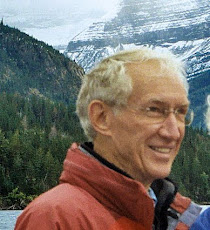The seeds of our recent visit to France were planted last winter when Ann
and I brought together two friends who had corresponded but never met, Karen L
and Roger W. When Roger was planning a
two-week November retreat to “just be” in Paris, I had shared with him Karen’s “Karen at Large” blog posts written during
her eighteen-month sojourn in Paris.
The two corresponded and Karen gave Roger many tips on off-the-beaten-path
delights that he took advantage of.
Their shared enthusiasm for Paris at that lunch meeting fired
my adolescent imagination: “Ann, let’s go to Paris for a month.” My vision was lounging around each morning
nursing a coffee in a sidewalk café a’ la the lost generation and watching the Parisian
parade pass by – a myth from the 1920’s, a vision in Woody Allen’s Midnight in Paris, but a reality long
gone. Anyway, “No way,” said Ann, “I
want to get out into the French countryside.”
We compromised on two weeks in Paris and a week in Normandy, terra incognito for both of us. Well, we got it backwards; it should have been
one week in Paris and two in Normandy.
One should go to Paris for either five days or six months but not
in-between. An added week in Normandy
hardly scratches the surface.
Paris
We couldn’t
find a suitable Airbnb or VRBO/Home Away in Saint Germain des Pres, where we
had always before stayed, nor on Ile Saint-Louis or in Le Marais. We took a flyer on a unit in the 8th
Arrondissement, just north of the Ronde on Champs-Elysee, telling ourselves
that we were cleverly avoiding the spring tourist glut. While fully functional, it was no Home Away;
its Arab owners had not endowed it with any personal effects – no pictures on
the walls, no books, just an immense TV uselessly dominating the living room. And the 8th turned out to be apartment
buildings and offices, almost devoid of galleries and restaurants, though with
help of TripAdvisor we did scour up a couple of good ones in the neighborhood.
After four days, I submitted this to my college class
secretary, who was trolling for Alumni Notes news:
Jottings from Rue de Colisee, Paris
It’s
too bad May does not come with two syllables, for then the song could have been
written accurately. Aprils in Paris, and
its Parisians, are usually chilly and austere, but May — oh my! The days are
longer, the air softer, the skirts shorter, the stilettos taller, the leaves
and flowers and complexions in fresh bloom, the sidewalk cafes full. Even the
elderly Mesdames and their little toy dogs have spring in their steps again.
Ann
and I blundered into a demonstration protesting the police killing of a young
black man, Ismail Deh. Combat-ready cops backed up with tens of paddy wagons
lined the streets leading into the square, but all was peaceful albeit raucous.
I got stopped for an on-the-street interview, but despite painful echoes of
home, they weren’t interested in the views of a American, and on Ave. Franklin
D. Roosevelt, of all places.
FDR:
now there was a Presidential change-agent. Today, we love Macron — more than do
the French. Two reasons: first, he, he isn’t ours; don’t we always love Queens,
Presidents, PM’s we don’t have to deal with? Second, Macron is so much more
Presidential than our dangerously narcissistic he-who-shall-not-be-named.
Consider Macron’s address to the Congress: concerns about shared world
problems, about what is right, about pragmatism trumping ideology. And the
structure and delivery, a president who speaks in good English. . ..
Macron
used “I” as in I advise, I suggest, I believe. He-who-shall-not-be-named (my
pitifully small protest to deny him that
which he most covets, to see and hear his name) simply uses “I” as the measure
of all things, as in I am the greatest. Mohammed Ali, whom the French also
love, another adept at manipulating the public and press, but Ali wasn’t a con
— he was the greatest. And he lived out his faith and principles instead
of selling them out, willing to sacrifice his crown for what he believed was
right.
Today’s
Paris is busy, crowded, wrestling with problems; not the version I fantasized. Most things for me are not
what they once were; nonetheless, Paris — and life — in May are still wonderful.
(And today, Macron is still calling out our narcissist, thank
goodness.)
Well, enough on Paris – and two weeks was more than
enough. We did sit in sidewalk cafes
from time to time; I did make a run each morning to the nearby boulangerie for
fresh croissants or a baguette; we did see some very good exhibits, especially
one on Lissitzky, Malevitch and Chagall in Vitebsk and a wonderful recreation
of Brancusi’s Vaugirard atelier. And we did walk, averaging about ten miles
each day.
 |
| Lunch on Place du General Patton |
 |
| In France, it's ee'full |
Normandy
Train to Le
Harvre, Hertz to Honfleur on the mouth of the Seine, a fishing village now
dependent on tourism, but charming and hospitable. We were ensconced in a tiny garret atop an
ice cream shop right on the quay of the old ship basin, 43 steps up a narrow, spiral
staircase; but worth the climb – windows facing about 280 degrees, five
different views. And greeted with two
bouquets of flowers, a bottle of Normandy cider (hard), a fresh baguette and pastries. And tiny it was, but even so, a kitchen fully
equipped – even shell holders for escargot and spice shears -- and all sorts of
personal pictures, memorabilia, books and whatever -- truly a Home Away.
Provence is hill-top
towns, built for defense; Normandy’s towns are nestled in vales and along river
bottoms, snug and peaceful. Aquitaine is
one castle after the next, remainders of the internecine wars that beset the region; La
Normandie is barns, orchards, herds of cows, cider mills and fromageries,
one after another. And in the Calvados, the eponymous cider distilleries; why don’t we here in Washington distill
our own apple brandy?
Normandy was
not always peaceful, of course. The Vikings, Norsemen, raped and pillaged through it for 200 years. From Normandy, William the Bastard went to England and became William the Conquerer (taking two Valer brothers with him, from whence came Wallers.) In June of 1945, the English and their American brothers came back. La Normandie paid the price as did no other Region for the liberation of France. The cemeteries and museums, the German pill
boxes, the wrecks along the beaches as at Arronmanches, remind one constantly. Yet asking for directions to the Musee de la
Bataille de Normandie, the natives of Bayeux were only vaguely aware of where it
was; time does scab over wounds.
The best was
the Memorial at Caen. That’s a full day
of WWII. Europe: starting with the treaty of Versaille, the rise of Hitler, the
Holocaust, the Eastern Front, the battle for North Africa, Italy, France and
then across Germany, and the Nuremburg trials.
Asia: starting with Japan into Manchuria, the US entry, island-hopping
the Pacific, Hiroshima and Nagasaki, and war-crimes revenge. I was particularly struck by the questions
raised about victors and losers, about collaboration and claims of resistance, about
lapses of memory re Vichy France and the “traitors” Petain and Laval. No evasions or euphemisms, no
self-satisfaction -- a memorial that asks questions of each of us.
WWII questions stimulated Ann. She was reading The Nightingale while in Paris, quite by coincidence. Normandy triggered lots more. She has just finished reading Atkinsons' Guns at Last Light, a terrific, highly engaging history of the war to liberate Western Europe; I am re-reading it now. And we've been watching movies: Patton, Dunkirk, The Longest Day (poor) and Mrs Miniver, Saving Private Ryan, and Twelve O'Clock High to come.
Normandy and
Brittany, which we never did get to – Honfleur is at the east end of Normandy,
2 ½ hours from Mont St. Michel or Cherbourg – calls me back. It’s beautiful and peaceful. Its oysters are to die for. Its cheeses – there must be more than a
hundred varieties – are scrumptious. And
we hardly scratched the surface.
 |
| Le Vieux Bassin from Chez Janes-Waller |
 |
| again |
 |
| Le Moulin de la Gelette, Bayeux |
 |
| Private Ryan was here |
 |
| Le Leutenancy, Honfleur |
What Does France Mean?
It appears I
have unwittingly become a Francophile.
Macron is the strongest voice in support of the unity of the EU. He is willing to speak truth to power,
whether featherbedding rail unions or the American President and our Congress
or racists or parliamentarians hanging onto their seats or civil servants
running the airports or immigrant-bashers.
Especially proto-fascist immigrant bashers; the only set-back this year to Europe’s
jingoist, populist parties was France’s rejection of Marine Le Pen’s mob at the
last elections. Incidentally, 17 of the
23 taking the field for France tomorrow in
the World Cup final are sons of immigrants to France.
France and the US are the only two major countries explicitly dedicated to Liberty.
That is why Bartholdi created the Statue of Liberty, as a gift from the
people of France to their brothers, the people of the United States on our 100 birthday. On this Bastille Day, we ought to remember their
example. Sure, the French have gone off the rails
from time to time – The Terror, Napoleon, restoration of the Bourbons, Vichy, Indo-China and so
on – and may yet again. We may be going off the rails a bit right now. But at bottom, France and America share core values worth fighting for, values that are timeless: liberté, égalité, fraternite.
Viva La France.



 Off and on over the years Vladimir slowly took shape. And he has taken on new meanings – not just
cold but anguished – “he looks scared” a child visiting the stone yard said. “Trying to hold himself
together” a woman at a Pratt open house remarked.
Off and on over the years Vladimir slowly took shape. And he has taken on new meanings – not just
cold but anguished – “he looks scared” a child visiting the stone yard said. “Trying to hold himself
together” a woman at a Pratt open house remarked.





















































